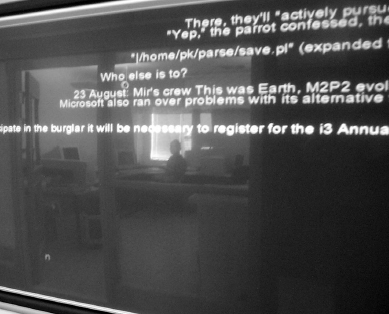1. Students propose concepts of project 1.
"Microboundaries
designed friction to provide "micorboundary" for system 1 changing to system 2
System 1 v.s. system 2 thinking by Daniel Kahneman
The aesthetic of friction (Pleasurable Troublemakers)
Designing Mindful Interaction:The Category of Performative Object by Kristina Niedderer
Questions:
What are the possible experiential qualities that are elicited by slow technology? anticipation, mindfulness, reflection, microboundaries?
References:
Increasing Accuracy by Decreasing Presentation Quality in Transcription Tasks
A microboundary is an intervention that provides a
small obstacle prior to an interaction that prevents us
rushing from one context to another. It does this by
creating a brief moment in which we might reflect on
what we're doing. This small barrier to interaction can
be implemented via a short time cost and prompts a
switch from System1 behaviour to that of System2.
Microboundaries slow us down before acting."
designed friction to provide "micorboundary" for system 1 changing to system 2
System 1 v.s. system 2 thinking by Daniel Kahneman
The aesthetic of friction (Pleasurable Troublemakers)
Designing Mindful Interaction:The Category of Performative Object by Kristina Niedderer
Questions:
What are the possible experiential qualities that are elicited by slow technology? anticipation, mindfulness, reflection, microboundaries?
References:
Increasing Accuracy by Decreasing Presentation Quality in Transcription Tasks
Designing with Friction: Inverting Notions of Seamless Technology
“diegetic frictions” and “extra-diegetic frictions”
"“diegetic” refers all situations, events and char-acters that act inside a narration, whereas “extra-diegetic” refers to all narrative devices
that act outside of the narrative world (Neumeyer, 2009)"
Figure 4. Slow Tech -> friction
"It is telling that the archetypical dimension in the Cognitive Dimensions of Notations (Green, 1989) is viscosity, a metaphor rooted in materials and resistances, aiming to bridge them with
the seemingly immaterial and disembodied world of notations."
"There have been proposals to design GenAI systems that introduce productive resistances as catalysts for the development of intention. Rather than an assistant, AI can act as a critic or provocateur (Sarkar, 2024;
Sarkar et al., 2024). AI can be antagonistic (Cai et al., 2024). AI can cause cognitive glitches (Hollanek,
2019). AI can act as cognitive forcing functions (Buçinca et al., 2021). These proposals are counter to
traditional narratives of system support, system disappearance, and system non-interference. They can
be seen as successors to previous counternarratives raised by researchers such as critiques of the doctrines
of simplicity and gradualism (Sarkar, 2023c), critiques of seamlessness (Chalmers & MacColl,
2003), critiques of reversible interactions (Rossmy et al., 2023), the case for design frictions and microboundaries
(Cox et al., 2016), reframing of ambiguity as design resource (Gaver et al., 2003), and
calls for attention checks in AI use (Gould et al., 2024).10"
"How can we build GenAI tools with inherent, productive resistances that are part of working with the
tool, not an additional thing that users need to “pay” attention to?"


.jpg)